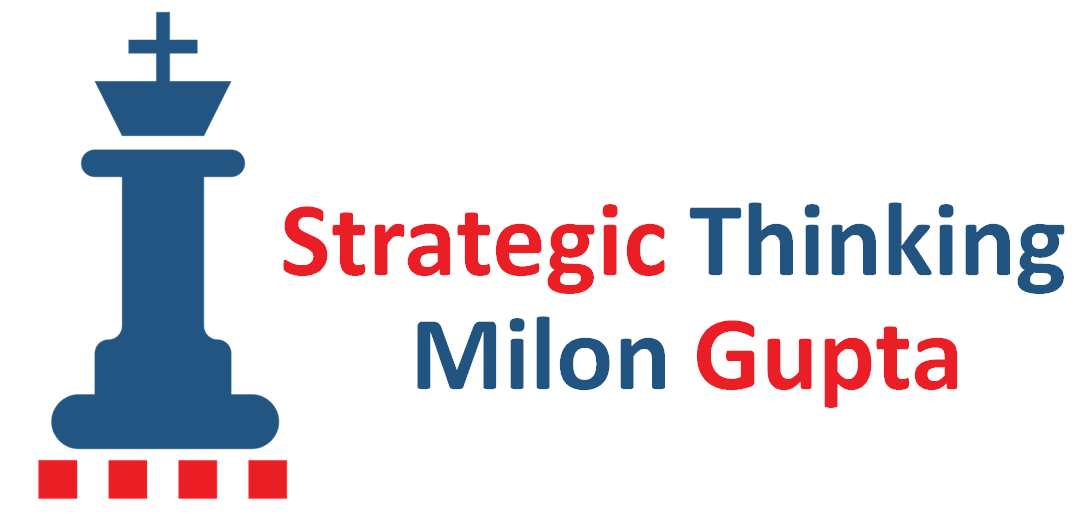 The experts have been debating the use of strategic planning for some time. Already in the mid-1990s, Canadian management professor Henry Mintzberg questioned the use of a formal strategic planning process in his book “The Rise and Fall of Strategic Planning”. And in view of fast, partly unforeseeable changes, there are good reasons to doubt the effectiveness of classic strategic planning methods and search for alternatives.
The experts have been debating the use of strategic planning for some time. Already in the mid-1990s, Canadian management professor Henry Mintzberg questioned the use of a formal strategic planning process in his book “The Rise and Fall of Strategic Planning”. And in view of fast, partly unforeseeable changes, there are good reasons to doubt the effectiveness of classic strategic planning methods and search for alternatives.
However, according to my knowledge, there is no large company, which does without a forml strategic planning process. And most medium-sized companies with 50 or more employees have a more or less formalized strategic planning process as well.
Already 10 years ago, researchers from the German university Clausthal-Zellerfeld found out in a study on the strategic competence of enterprises that 6 out of 10 small and medium-sized enterprises (SMEs) think that strategic planning is important for the success of their company. The study also showed that the success of an SME’s corporate strategy had been frequently diminished by planning deficits and organizational omissions.
Even assuming that the strategy process in most SMEs has become more professional and effective, in everyday business there are still a number of hard-to-eradicate strategic planning errors, which may limit the longer-term business success.
The following five strategic planning errors are to my impression still widespread among SMEs:
1. The strategy only exists in the head of the CEO.
Especially in smaller, owner-operated companies, the CEO/owner sets the strategy by himself, after more or less intense discussions. Frequently, this strategy is gut-based, exists only in the had of the owner and is communicated only verbally, if at all. This can work for a while, if the CEO has a good gut instinct and at least communicates operational instructions well.
If the company grows or gets into trouble, however, this can lead to problems. Because if the employees do not know exactly what the company strategy is, they can hardly implement it.
If you act as a manager in this or a similar way, I suggest the following experiment: Ask any member of your company what your company’s mission is. I bet you will be surprised at the variety of responses.
2. There is a lack of a clearly defined process.
It is a fallacy to believe that a clearly defined strategy process is only necessary for large companies. This is as if pilots of short-haul aircraft do not need a start-checklist because they do not fly a jumbo.
Under clearly defined, I understand a process described in writing.
In companies that are certified according to ISO 9001, this is self-evident anyway, but other companies can also benefit from this. It creates transparency and prevents the management from forgetting important points in the strategy process or reinventing them every year. At the same time, it is important to keep the process as unbureaucratic and manageable as possible.
3. Employees are too little involved in strategy development.
 The leadership team of many companies sees the role of employees only in implementing the business strategy announced from above. This gives away the opportunity to actively involve the employees in strategic development.
The leadership team of many companies sees the role of employees only in implementing the business strategy announced from above. This gives away the opportunity to actively involve the employees in strategic development.
By this I do not mean that in a strategy meeting 100 people sit at the table and discuss the corporate strategy equally like in a grass roots democracy. What I rather mean by that is to treat employees as stakeholders on an equal footing and taking their input to corporate strategy seriously into account.
Not involving the employees has two serious drawbacks: firstly, strategy without input from the basis can lose touch with reality; secondly, the motivation of employees suffers, if they have to implement something they have not been involved in and which they may not fully understand.
4. Proven strategy tools are not used.
The knowledge about a number of strategy tools is now commonplace. The vast number of executives at medium-sized companies probably know what a SWOT analysis or a value chain analysis is. And yet such proven instruments are too little or only superficially used by medium-sized enterprises.
The quality of the resulting business strategy can suffer considerably from this. Ultimately, this increases risks in the implementation phase and can influence the bottom line. Companies that have not established these methods in-house would do well to get them at least for an annual strategy meeting via a strategy coach.
The strategy coach would at the same time free the CEO from the unfortunate role of meeting moderator. Unfortunate, because the CEO, qua office, has already a dominant role in strategy meetings, which is often further reinforced by the presenter role – to the detriment of an open debate.
5. Resources to implement the business objectives are neglected.
Setting strategic objectives for the coming fiscal year and the next five years is one thing. Planning the route to get there is another matter. One crucial factor in this is to realistically assess the resources needed and to plan the generation of still non-existent resources as a sub-goal. This involves more than new employees and money. It is also about intangible resources, such as knowledge. Many medium-sized companies neglect these resources in strategic planning, which considerably complicates implementation.
Conclusion
Companies that avoid these five strategic planning mistakes are at an advantage. However, even more is needed for a successful strategy process, depending on company size and competitive position. Contact me if you have any questions.
